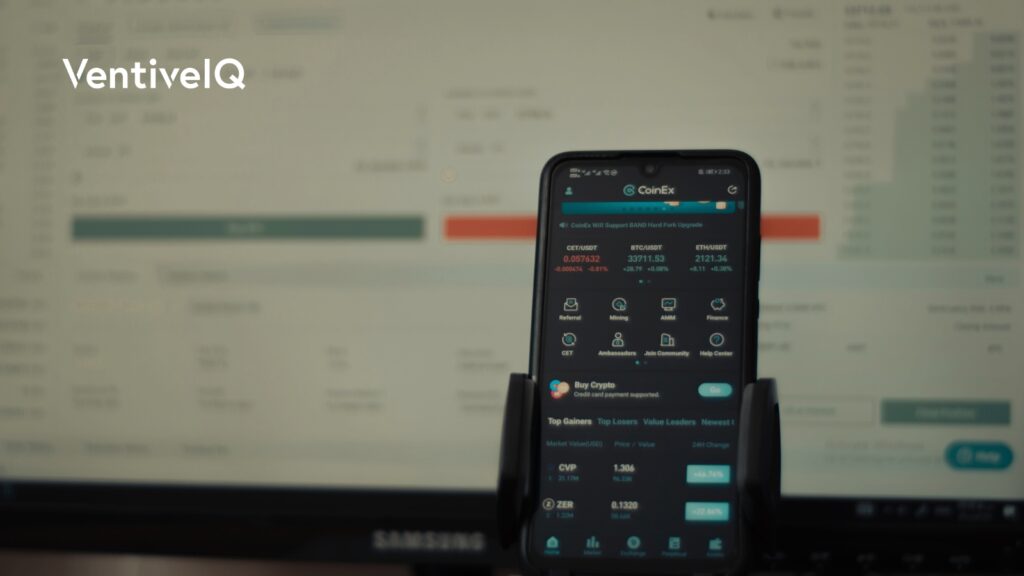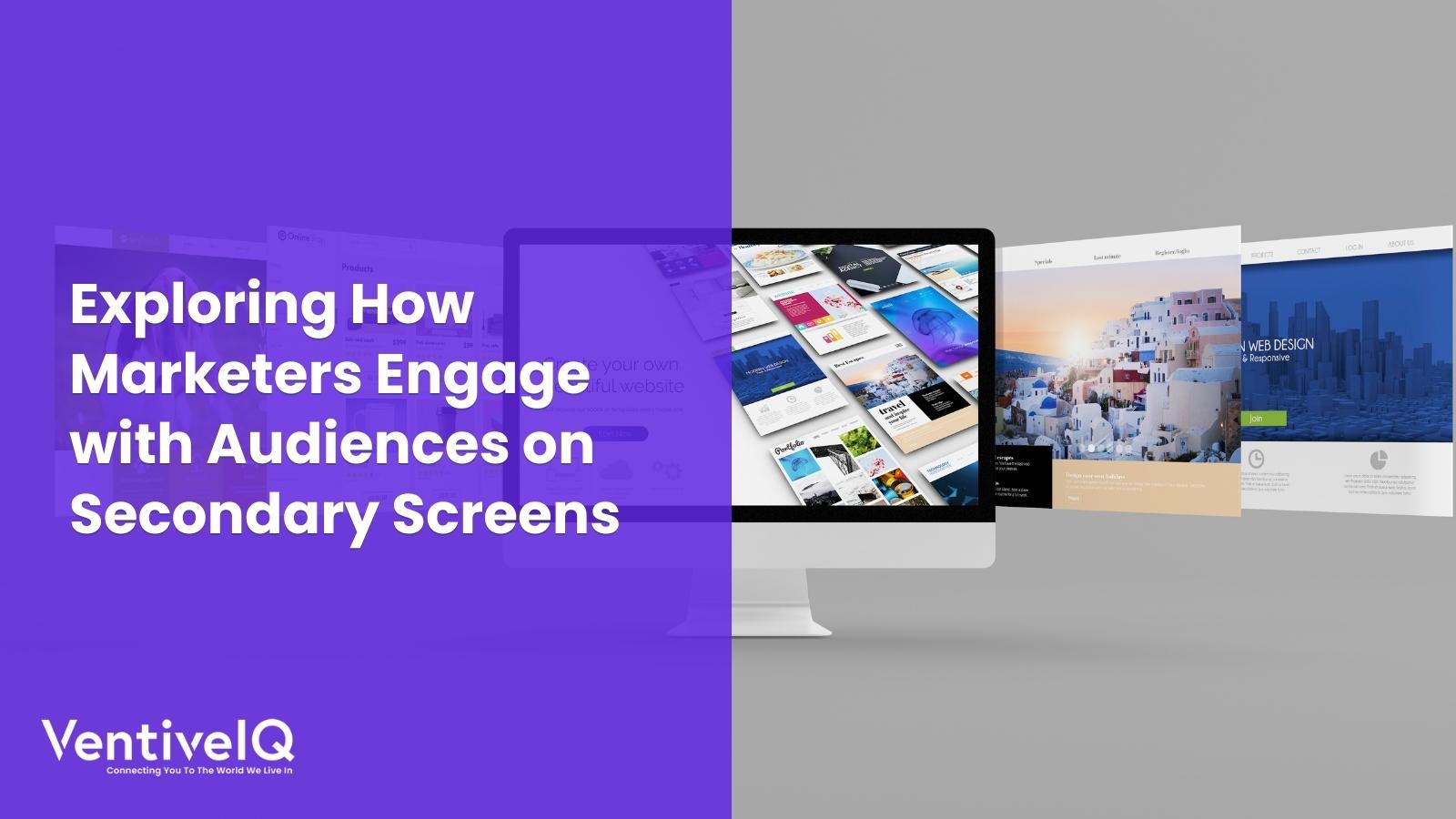Discover how VentiveIQ harnesses the potential of secondary screens to revolutionize audience engagement via multi-screen marketing strategies in meaningful ways.
Secondary Screens: The New Frontier of Audience Engagement
In today’s digital landscape, people are constantly connected to various devices. We find ourselves checking our phones while watching TV, browsing the web on our laptops while enjoying music, and scrolling through social media on our tablets. Consequently, secondary scree have assumed an increasingly significant role in how we consume media.

This shift offers marketers a distinct opportunity to connect with Audience Analytics in novel and creative ways. However, with the multitude of screens and devices available, determining where to begin can be challenging. In this blog post, we will delve into the diverse methods through which marketers can harness secondary screen to engage with their audiences. Additionally, we’ll share valuable insights and tips for crafting compelling multi-screen marketing campaigns.
The Rise of Secondary Screens
The widespread use of smartphones and other secondary screens has revolutionized how we access content. The days when television held undivided attention in households are long gone. Nowadays, viewers frequently have their smartphones or tablets within reach, poised to enrich their viewing experience or stay connected to the digital realm. This transition has opened up a distinctive window of opportunity for marketers to engage with audiences instantly, establishing multi-screen marketing as an essential pillar of any effective digital strategy.
Understanding Secondary Screens
Secondary screens encompass any device apart from your primary viewing tool. These could encompass your smartphone, laptop, tablet, or even a smart TV distinct from your main one. Secondary screen are typically employed to engage with supplementary content while simultaneously using your primary device. For instance, you might find yourself glancing at your phone while watching TV or surfing the internet on your laptop while enjoying music.
The Power of Multi-Screen Marketing
Multi-screen marketing is the practice of using secondary screen to reach and engage audiences. It’s a powerful way to reach consumers where they are and deliver relevant messages at the right time. Multi-screen marketing can be used to achieve a variety of marketing goals, including:
- Increasing brand awareness
- Driving traffic to your website or app
- Generating leads
- Boosting sales
- Improving customer loyalty

How to Engage Audiences on Secondary Screens
Engaging audiences on secondary screen can be achieved through various strategies. Here are some valuable tips:
- Optimize for Mobile: Given the increasing use of smartphones and tablets for media consumption, it’s crucial to ensure that your content is mobile-friendly. Make certain that your website and other materials are well-optimized for these devices, offering a seamless experience to users on secondary screen.
- Leverage social media: social media provides an excellent platform to connect with secondary screen audiences. Share captivating content, organize interactive contests, and actively engage with your followers. Building a strong social media presence can significantly enhance your outreach.
- Utilize Push Notifications: Push notifications are a powerful tool for delivering timely and relevant messages to your audience. They can be used to promote new products, offer special deals, or remind users about upcoming events. Utilize them strategically to keep your audience informed and engaged.
- Incorporate Gamification: Gamification entails integrating elements of game design into non-gaming contexts. This approach can be remarkably effective in engaging secondary screen audiences. For instance, consider creating a mobile game or app that rewards users for interacting with your brand. Gamification adds an element of fun and interactivity to the experience.
- Explore Interactive Video: Interactive video introduces a level of engagement where viewers actively participate in the content. For instance, viewers may have the option to choose their own adventure, answer questions, or play games within the video. Interactive video is an exciting way to captivate audiences on secondary screens and keep them actively involved in your content.
Top 3 Examples of Effective Multi-Screen Marketing Campaigns
Here are three standout examples of successful multi-screen marketing campaigns:
- Domino’s Pizza: Domino’s Pizza has taken multi-screen marketing to the next level by enabling customers to order their favorite pizzas seamlessly through their smartphones, laptops, or tablets. They have also implemented user-friendly features like push notifications and a dedicated mobile app, making it incredibly convenient for customers to place orders while on the move.
- Coca-Cola: Coca-Cola has embraced interactive video advertising, captivating audiences with engaging content that encourages interaction. For instance, one of their ads empowers viewers to shape their own narrative by clicking on different parts of the screen, creating a unique and personalized experience.
- Starbucks: Starbucks has harnessed the power of a mobile app, allowing coffee enthusiasts to pre-order and pre-pay for their favorite brews in advance. Beyond the convenience of mobile ordering, Starbucks offers a host of additional features within its app, including rewards and loyalty programs, to enhance the overall customer experience.

Tips for Creating Effective Multi-Screen Marketing Campaigns
Here are some valuable pointers to craft effective multi-screen marketing campaigns:
- Know Your Audience: Start by gaining a deep understanding of your intended audience. What types of devices do they predominantly use? What kind of content do they engage with on these devices? Tailoring your campaign to align with their preferences is key to success.
- Seamless Integration: Ensure that your multi-screen marketing campaign offers a seamless and integrated experience. The transition between different devices should be effortless for your audience, allowing them to switch devices without losing the continuity of their experience.
- Personalization: Utilize data-driven insights to personalize your messages for each specific audience segment. This personalized approach significantly enhances the relevance and attractiveness of your messages, making them more engaging and effective.
- Performance Measurement: To refine and optimize your multi-screen marketing efforts, it’s essential to measure the results of your campaigns. This data-driven approach helps you identify what strategies are working well and what needs improvement, enabling you to fine-tune your approach for better outcomes.
Conclusion: VentiveIQ’s Commitment to Multi-screen Marketing
In the dynamic landscape of digital marketing, VentiveIQ leads the way as an innovator in the field of multi-screen marketing. We understand that secondary screens are not merely diversions but untapped potential. Our strategies focus on engaging audiences, delivering relevant content, and leveraging cutting-edge technology, all of which are shaping the future of marketing in a multi-screen environment. The journey is ongoing, and we extend an invitation to marketers to join us on this path, discovering the limitless possibilities of secondary screen and cultivating stronger connections with their audiences.



